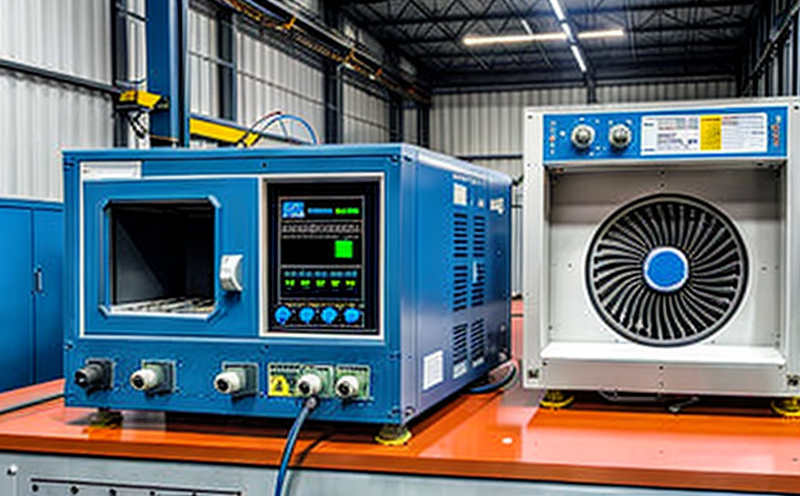Fatigue testing for the durability of aerospace electrical and electronic components
The Critical Role of Fatigue Testing in Ensuring the Durability of Aerospace Electrical and Electronic Components
In the aerospace industry, reliability is paramount. The performance and safety of aircraft, spacecraft, and satellites depend on the ability of their electrical and electronic components to withstand extreme temperatures, vibrations, and environmental conditions. However, these components are often subject to cyclical stressors that can lead to premature failure, resulting in costly delays, maintenance downtime, and even catastrophic accidents.
This is where fatigue testing for the durability of aerospace electrical and electronic components comes into play. Conducted by experienced laboratories like Eurolab, this specialized service helps manufacturers and operators predict the lifespan of their critical components, ensuring they meet stringent regulatory requirements and maintain optimal performance throughout their operational life.
What is Fatigue Testing?
Fatigue testing is a laboratory procedure that simulates the cyclic loading conditions to which aerospace electrical and electronic components are subjected during normal operation. This includes thermal cycling, vibration, shock, and other environmental factors that can contribute to degradation over time. By applying controlled stressors in a repeatable and consistent manner, fatigue testing helps identify potential weaknesses and vulnerabilities in component design or materials.
Why is Fatigue Testing Essential for Aerospace Electrical and Electronic Components?
Predictive Maintenance Fatigue testing enables manufacturers and operators to anticipate when components will fail, allowing for proactive maintenance and repair, reducing downtime, and minimizing costs.
Compliance with Regulatory Requirements Aerospace industries are subject to rigorous standards and regulations, such as MIL-STD-810G or DO-160D. Fatigue testing ensures that components meet these requirements, ensuring compliance and avoiding costly rework or product recalls.
Improved Safety By identifying potential weaknesses, fatigue testing helps prevent catastrophic failures, ensuring the safe operation of aircraft, spacecraft, and satellites.
Increased Efficiency With a deeper understanding of component lifespan, manufacturers can optimize their supply chains, reduce inventory levels, and allocate resources more effectively.
Advantages of Fatigue Testing for Aerospace Electrical and Electronic Components
Reduced Risk of Failure By simulating operational conditions in a controlled laboratory setting, fatigue testing reduces the likelihood of unexpected failures during actual operation.
Enhanced Component Reliability Fatigue testing helps identify design or material weaknesses, allowing manufacturers to make informed design changes and improve component reliability.
Cost Savings Proactive maintenance and repair enabled by fatigue testing can significantly reduce costs associated with downtime, repair, and replacement of failed components.
Compliance with Industry Standards Eurolabs fatigue testing services ensure that aerospace electrical and electronic components meet or exceed industry standards for durability and reliability.
How Does Fatigue Testing Work?
The fatigue testing process involves several key steps
Component Selection Eurolab works closely with clients to select the specific components to be tested, taking into account their intended application, operational conditions, and relevant standards.
Test Protocol Development Based on industry standards and client requirements, Eurolab develops a customized test protocol that simulates the cyclic loading conditions of the component in question.
Fatigue Testing The selected components are subjected to controlled stressors, such as thermal cycling, vibration, or shock, under repeatable and consistent conditions.
Data Analysis Eurolabs experienced engineers analyze the data collected during testing, identifying potential weaknesses and vulnerabilities in component design or materials.
QA Frequently Asked Questions About Fatigue Testing
What types of aerospace electrical and electronic components can be tested?
Eurolab provides fatigue testing services for a wide range of components, including connectors, switches, sensors, actuators, and power supplies.
How long does the fatigue testing process take?
The duration of fatigue testing depends on the specific test protocol, component type, and desired level of detail. Eurolab works closely with clients to develop customized test plans that meet their needs and timelines.
Can fatigue testing be done in-house or must it be outsourced?
While some manufacturers have the capability to conduct basic fatigue testing in-house, more complex tests often require specialized equipment and expertise, making outsourcing to a laboratory like Eurolab a better option.
What are the benefits of choosing Eurolab for fatigue testing services?
Eurolabs experienced engineers, state-of-the-art facilities, and commitment to delivering high-quality results make us an ideal partner for aerospace manufacturers and operators seeking reliable fatigue testing services.
Conclusion
Fatigue testing is a critical service that helps aerospace electrical and electronic component manufacturers and operators ensure the reliability and durability of their products. By simulating operational conditions in a controlled laboratory setting, Eurolabs fatigue testing services reduce the risk of failure, enhance component reliability, and save costs associated with downtime and repair. With our expertise, facilities, and commitment to delivering high-quality results, we help clients meet or exceed industry standards for durability and reliability. Trust Eurolab for your fatigue testing needs and ensure the safe operation of your critical aerospace electrical and electronic components.




